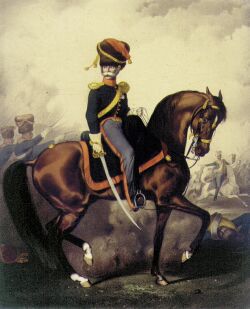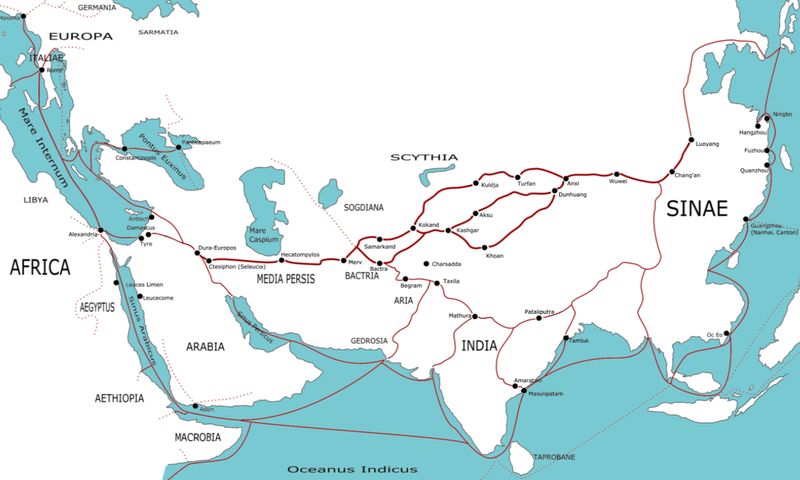|
Great Synagogue (Oświęcim)
The Great Synagogue in Oświęcim was, until World War II, the largest synagogue in Oświęcim, Poland. It was destroyed in November 1939. History Old synagogue The first mention of the synagogue in Oświęcim dates back to 1588. It was probably established around that year. Archival documents suggest that a townsman from Oświęcim, Jan Piotraszewski, gave or sold his land to the local Jewish community so that they could build their temple and cemetery. The first building was likely constructed from wood. This wooden synagogue was probably destroyed during the Swedish deluge. Over the centuries the building was twice destroyed by fire. The first time was on July 6, 1711. After this fire, a stone temple was constructed. Another fire damaged the building in 1863. The Great Synagogue The last synagogue, The Great Synagogue, was built in 1873 after the last fire on the site of the pre-existing synagogue. Between 1899 and 1900 it was redesigned and rebuilt by the architect Ca ... [...More Info...] [...Related Items...] OR: [Wikipedia] [Google] [Baidu] |
Oświęcim
Oświęcim (; german: Auschwitz ; yi, אָשפּיצין, Oshpitzin) is a city in the Lesser Poland ( pl, Małopolska) province of southern Poland, situated southeast of Katowice, near the confluence of the Vistula (''Wisła'') and Soła rivers. The city is known internationally for being the site of the Auschwitz concentration camp (the camp is also known as KL or KZ Auschwitz Birkenau) during World War II, when Poland was occupied by Nazi Germany. Name The name of the city is of Slavic extraction, possibly derived from the owner of a Slavic gord which existed there in the Middle Ages. It has been spelled many different ways and known by many different languages over time, including Polish, Czech, German, and Latin. The town was an important center of commerce from the late Middle Ages onward. Fourteenth-century German-speaking merchants called it Auswintz; by the 15th century, this name had become Auschwitz. From 1772 to 1918 Oświęcim belonged to the Habsburg the Kingd ... [...More Info...] [...Related Items...] OR: [Wikipedia] [Google] [Baidu] |
Torah Ark
A Torah ark (also known as the ''Heikhal'', or the ''Aron Kodesh'') refers to an ornamental chamber in the synagogue that houses the Torah scrolls. History The ark, also known as the ''ark of law'', or in Hebrew the ''Aron Kodesh'' or ''aron ha-Kodesh'' ("holy ark") by Ashkenazi communities and as the ''Heikhal'' ("sanctuary") among Sefardi communities. ''Aron Kodesh'' comes from Hebrew אָרוֹן קׄדֶש ''ʼārōn qōdeš'' (i.e. A''ron Kodesh''), ''Holy Ark''. This name is a reference to the ''’ārōn haqqōdeš'', the Hebrew name for the Ark of the Covenant which was stored in the Holy of Holies in the inner sanctuary of both the ancient Tabernacle and the Temple in Jerusalem. Similarly, ''Hekhál'', also written ''hechal'', ''echal'' or ''heichal'' — and sometimes also ''Echal Kodesh'' (mainly among Balkan Sephardim) comes from Hebrew הֵיכָל ''hēkhāl'' (palace), was used in the same time period to refer to the inner sanctuary. The ''hekhal'' contained the M ... [...More Info...] [...Related Items...] OR: [Wikipedia] [Google] [Baidu] |
:en:Romanesque Revival Architecture
Romanesque Revival (or Neo-Romanesque) is a style of building employed beginning in the mid-19th century inspired by the 11th- and 12th-century Romanesque architecture. Unlike the historic Romanesque style, Romanesque Revival buildings tended to feature more simplified arches and windows than their historic counterparts. An early variety of Romanesque Revival style known as Rundbogenstil ("Round-arched style") was popular in German lands and in the German diaspora beginning in the 1830s. By far the most prominent and influential American architect working in a free "Romanesque" manner was Henry Hobson Richardson. In the United States, the style derived from examples set by him are termed Richardsonian Romanesque, of which not all are Romanesque Revival. Romanesque Revival is also sometimes referred to as the "Norman style" or " Lombard style", particularly in works published during the 19th century after variations of historic Romanesque that were developed by the Normans ... [...More Info...] [...Related Items...] OR: [Wikipedia] [Google] [Baidu] |
:en:Wadowice
Wadowice (; ger, Frauenstadt – Wadowitz) is a town in southern Poland, southwest of Kraków with 17,455 inhabitants (2022), situated on the Skawa river, confluence of Vistula, in the eastern part of Silesian Foothills (Pogórze Śląskie). Wadowice is known for being the birthplace of Karol Wojtyła, later Pope John Paul II and Godwin von Brumowski, Austria-Hungary’s best flying ace with 35 credited and an additional 8 possible wins in the air. History The first permanent settlement in the area of today's Wadowice was founded in the late 10th century or early 11th century. According to a local legend, the town was founded by a certain Wad or Wład, a short form for the Slavic name of Ladislaus ( pl, 'Władysław'). The town was first mentioned as ''Wadowicze'' in St. Peter penny register in the years 1325–1327. In 1327 it is also mentioned (under the same name) in a fief registry sent from prince John I Scholastyk of Oświęcim to Bohemian king John I, Count of ... [...More Info...] [...Related Items...] OR: [Wikipedia] [Google] [Baidu] |
:en:Bielsko
Bielsko (german: Bielitz, cs, Bílsko) was until 1950 an independent town situated in Cieszyn Silesia, Poland. In 1951 it was joined with Biała Krakowska to form the new town of Bielsko-Biała. Bielsko constitutes the western part of that town. Bielsko was founded by the Cieszyn Piast dukes in the late 13th century on the grounds of village later called Stare Bielsko (''Old Bielsko''), on the Biała River. It was first mentioned in a written document in 1312. Originally settled by Germans, it became the largest German-language center (''Deutsche Sprachinsel Bielitz'') in the Duchy of Teschen, and remained so until the end of World War II. In 1572 it gained autonomy as the Duchy (State) of Bielsko. During the 18th century a rapid development of textile industry occurred, and at the beginning of the 19th century more than 500 weavers worked in the town. After the 1920 division of Cieszyn Silesia between Poland and Czechoslovakia it became, despite the protests of l ... [...More Info...] [...Related Items...] OR: [Wikipedia] [Google] [Baidu] |
Carl Korn
Carl may refer to: * Carl, Georgia, city in USA * Carl, West Virginia, an unincorporated community *Carl (name), includes info about the name, variations of the name, and a list of people with the name * Carl², a TV series * "Carl", an episode of television series ''Aqua Teen Hunger Force'' * An informal nickname for a student or alum of Carleton College CARL may refer to: * Canadian Association of Research Libraries * Colorado Alliance of Research Libraries See also *Carle (other) *Charles Charles is a masculine given name predominantly found in English language, English and French language, French speaking countries. It is from the French form ''Charles'' of the Proto-Germanic, Proto-Germanic name (in runic alphabet) or ''*k ... * Carle, a surname * Karl (other) * Karle (other) {{disambig ja:カール zh:卡尔 ... [...More Info...] [...Related Items...] OR: [Wikipedia] [Google] [Baidu] |
Fragment Marmuru Ze Znakami Zodiaku Z Wielkiej Synagogi W Oświęcimiu, MŻ 6
Fragment may refer to: Entertainment Television and film * "Fragments" (''Torchwood''), an episode from the BBC TV series * "Fragments", an episode from the Canadian TV series '' Sanctuary'' * "Fragments" (Steven Universe Future), an episode from the American TV series ''Steven Universe Future'' * ''Fragments'' (film) (a.k.a. ''Winged Creatures''), a 2009 film * '' Fragments: Chronicle of a Vanishing'', a 1991 Croatian film Music * "Fragments" (song), a song by Jack Johnson * "Fragments", a song from ''Endless Wire'' (The Who album) * ''Fragments'' (Paul Bley album), a 1987 album by jazz pianist Paul Bley * ''Fragments'', an album by the Danish singer Jakob Sveistrup * ''Fragments'' (EP), an EP by Rapids! * ''Fragments'', an EP by Chipzel * ''Fragments'' (Bonobo album), a 2022 album by British producer Bonobo Other * ''Fragments'', a play by Edward Albee * ''Fragments: Memories of a Wartime Childhood 1939–1948'', a fictional memoir of Holocaust survival by Binjamin W ... [...More Info...] [...Related Items...] OR: [Wikipedia] [Google] [Baidu] |
:en:Berek Joselewicz
Berek Joselewicz (17 September 1764 – 15 May 1809) was a Polish Jewish colonel of the Polish Army during the Kościuszko Uprising. Joselewicz commanded the first Jewish military formation in modern history excluding Prince Potemkin's Israelovsky Regiment.M. Kasprzyk (2007) Berek Joselewicz : The Partitions of Poland: 1772 - 1795. Internet Archive. He was also a merchant and financial agent of the Polish magnate Prince Massalski. Early life Dow Baer (Berek) Joselewicz was born in Kretinga, in the Duchy of Samogitia of the Grand Duchy of Lithuania, a member country of the Polish–Lithuanian Commonwealth. He worked as a financial agent for a local Lithuanian magnate, the Lord of Kretinga and Bishop of Vilnius Prince Massalski. Joselewicz often travelled abroad in pursuit of various tasks, during which he learned to speak French. He spent some time in Paris during the beginning of the French Revolution, and it is thought that this may have later inspired him to join Tad ... [...More Info...] [...Related Items...] OR: [Wikipedia] [Google] [Baidu] |
:en:Oświęcim Castle
Oświęcim Castle ( Polish: ''Zamek w Oświęcimiu'') is a castle raised in the Medieval Ages on the top of a hill, on the right bank of the River Soła in Oświęcim. The castle comprises a thirteenth-century early-Gothic defence tower covered by a roof, a two-floor building built around a courtyard (with the old wing from the beginning of the sixteenth century) and additional connections between the wings built in 1929–31. Most of the fortifications around the castle were destroyed due to the changing river course of the River Soła. On the top of the hill where the castle is located there are remains of the fortifications. There are two tunnels located underneath the castle, the older (built before 1914) and the second which was excavated by the Germans (1940–1944). The tunnels were used as bunkers. References Castles in Lesser Poland Voivodeship Oświęcim County {{Poland-castle-stub ... [...More Info...] [...Related Items...] OR: [Wikipedia] [Google] [Baidu] |
:en:Trade Route
A trade route is a logistical network identified as a series of pathways and stoppages used for the commercial transport of cargo. The term can also be used to refer to trade over bodies of water. Allowing goods to reach distant markets, a single trade route contains long-distance arteries, which may further be connected to smaller networks of commercial and noncommercial transportation routes. Among notable trade routes was the Amber Road, which served as a dependable network for long-distance trade. Maritime trade along the Spice Route became prominent during the Middle Ages, when nations resorted to military means for control of this influential route. During the Middle Ages, organizations such as the Hanseatic League, aimed at protecting interests of the merchants and trade became increasingly prominent. In modern times, commercial activity shifted from the major trade routes of the Old World to newer routes between modern nation-states. This activity was sometimes ... [...More Info...] [...Related Items...] OR: [Wikipedia] [Google] [Baidu] |




